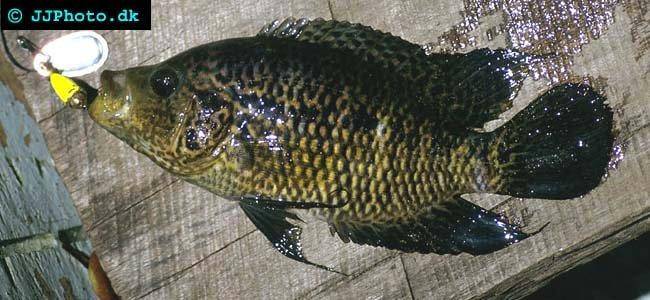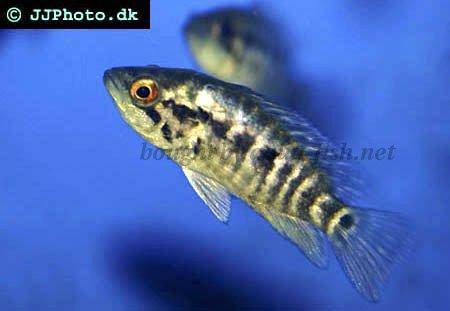Wolf Cichlid (Parachromis dovii) Care
Brief description
This page is devoted to raising Wolf cichlids in fish tanks including feeding, breeding and temperament. If the question you're looking to get answer on hasn't been answered on this page yet, feel free to use a form at the bottom of this page and we'll answer! Similarly, sharing experiences is welcome too! Also visit this page: Wolf cichlid - Parachromis dovii profile with forum!
The body of the Wolf cichlid is designed to be the perfect killing machine, it is packed with solid muscle and it will attempt to attack anything in its path. The body coloration is mostly silver with touches of green and a black line runs from the back of the eye right down to the tail fin. The area below this midway line tends to be lighter than the area above it.
Tank set up for the Wolf cichlid:-
As mentioned earlier, the tanks required to house this fish need to be very large. A 150 gallon tank will hold Wolf cichlids that have just reached maturity, but for a fully grown specimen, expect to upgrade to an even larger tank. As the Wolf cichlid likes to dig at the substrate, I would recommend sand on the bottom of the tank, adding plants will never work, and the fish will simply uproot them or destroy them. Only rocks or roots should be added for décor as well as providing hiding places and territorial markers. Because this fish digs all of the time, do not stack the rocks loosely in place, they must be glued in a formation to prevent them toppling over.
The ideal pH for the tank should range from 6.5-7.0 with water temperatures between 22-27 deg C. Filtration should be of a high standard as these fish produce a lot of waste.
Be careful when selecting tank mates for the Wolf cichlid, they will eat any smaller fish and will be aggressive to fish of the same size. It is best to keep them with cichlids that will hold their own against them; this is one of the reasons that they are often given a solitary lifestyle, being the only occupant of the tank. Like Oscars these fish can get bored and need some “toys” in the tank to keep them alert. Floating balls or loose pieces of wood will keep them occupied; they need these distractions as they are very intelligent fish. Regular water changes are a must, this will aid the filtration.
Feeding Wolf cichlids:-
Wild specimens may take a while to accept food offered that is not live, they will with patience start to accept beef heart, and any other meaty foods. Shrimps and cichlid pellets should also be accepted in time; even small live feeder fish can be included in the diet. Caution must be taken when feeding these fish; they do have powerful teeth and jaws, always keep your hands clear.
Breeding Wolf cichlids:-
These are a hard fish to breed; even paired sexes will be aggressive to each other. Some pairs will take to breeding easily but others can be a nightmare. The male Wolf cichlid will have longer, pointed fins; more noticeable when placed near a female, and he will display small dots on his head. These are not seen on the female, this makes sexing the fish quite easy which is normally quite hard to do with cichlids. They reach maturity at 5 inches in length and will look for a suitable spawning site when paired up. They will either lay their eggs on a flat surface or in a cave, it varies between the pairs.
Approximately 1500 eggs will be laid which should hatch after 5 days. Once the fry are free swimming they can be fed a diet of newly hatched brine shrimp which they will consume quickly. As the fry develop, they must be size graded as the larger fry will see the smaller ones as a food source. At least 2 growing on tanks will be needed for maximum survival rate.

